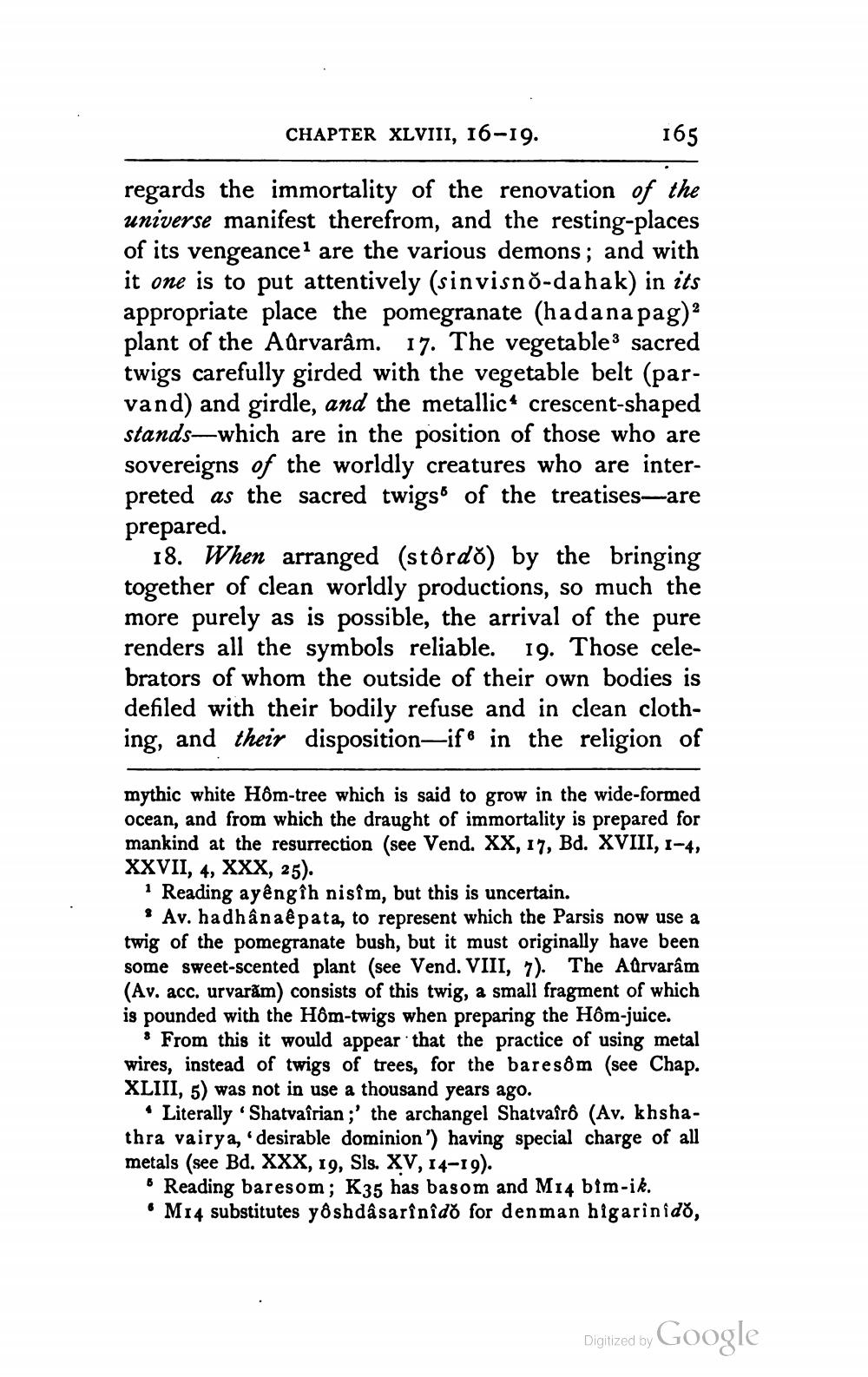________________
CHAPTER XLVIII, 16-19.
165
regards the immortality of the renovation of the universe manifest therefrom, and the resting-places of its vengeance are the various demons; and with it one is to put attentively (sinvisno-dahak) in its appropriate place the pomegranate (hadana pag) plant of the Adrvarâm. 17. The vegetables sacred twigs carefully girded with the vegetable belt (parvand) and girdle, and the metallic* crescent-shaped stands—which are in the position of those who are sovereigns of the worldly creatures who are interpreted as the sacred twigs of the treatises—are prepared.
18. When arranged (stôrdo) by the bringing together of clean worldly productions, so much the more purely as is possible, the arrival of the pure renders all the symbols reliable. 19. Those celebrators of whom the outside of their own bodies is defiled with their bodily refuse and in clean clothing, and their disposition—ife in the religion of
mythic white Hôm-tree which is said to grow in the wide-formed ocean, and from which the draught of immortality is prepared for mankind at the resurrection (see Vend. XX, 17, Bd. XVIII, 1-4, XXVII, 4, XXX, 25). 1 Reading ayêngih nisim, but this is uncertain.
Av. hadhânae pata, to represent which the Parsis now use a twig of the pomegranate bush, but it must originally have been some sweet-scented plant (see Vend. VIII, 7). The Adrvarâm (Av, acc. urvarām) consists of this twig, a small fragment of which is pounded with the Hôm-twigs when preparing the Hôm-juice.
* From this it would appear that the practice of using metal wires, instead of twigs of trees, for the baresom (see Chap. XLIII, 5) was not in use a thousand years ago.
Literally 'Shatvairian ;' the archangel Shatvairô (Av. khshathra vairy a, desirable dominion') having special charge of all metals (see Bd. XXX, 19, Sls. XV, 14-19).
6 Reading baresom: K35 has basom and M14 bim-ik. • M14 substitutes yoshdasarînido for denman higarinido,
Digitized by Google




